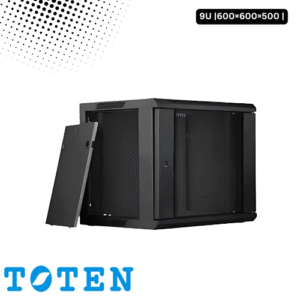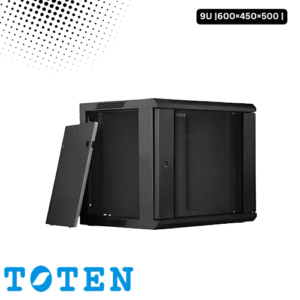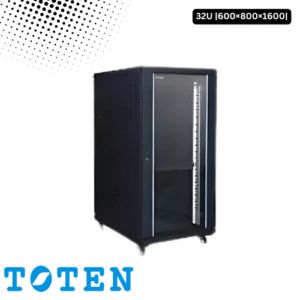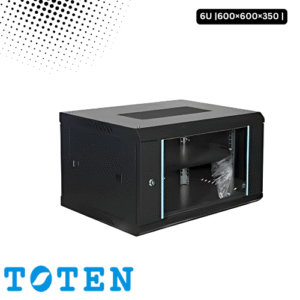Server Rack Cooling and Ventilation: What Buyers Must Know
A comprehensive guide to avoiding the 50,000 mistake most IT managers make when selecting server rack cooling solutions
The conference room fell silent when the CTO announced the news: their primary data center had crashed during a routine Tuesday afternoon, taking down critical customer services for 6 hours. The culprit? A 2,000 server rack with inadequate cooling that triggered a cascade failure across their entire infrastructure.
The aftermath? 47,000 in lost revenue, emergency cooling repairs, and a bruised reputation that took months to rebuild.
This isn’t an isolated incident—it’s a predictable outcome when organizations treat server rack cooling as an afterthought rather than the mission-critical infrastructure component it truly is.
Why Server Rack Cooling Failures Cost More Than You Think
Here’s the uncomfortable truth: most IT managers dramatically underestimate the total cost of cooling failures.
While they obsess over server specifications and network topology, they often delegate rack selection to procurement teams armed with basic checklists and “lowest bid” mandates. The result? Cooling systems that look adequate on paper but crumble under real-world thermal loads.
Consider these hidden costs that surface after inadequate cooling decisions:
- Emergency downtime recovery: 5,600 per minute for critical applications
- Hardware replacement: Overheated servers fail 3x faster than properly cooled systems
- Performance throttling: CPUs automatically reduce clock speeds when overheated, killing application performance
- Compliance penalties: Financial services face regulatory fines for availability failures
- Reputation damage: Customer churn accelerates after service disruptions
The math is brutal: saving 500 on rack cooling can easily trigger 50,000+ in downstream costs.
The Server Rack Cooling Ecosystem: More Complex Than You Think
Most buyers approach server rack cooling with a dangerous oversimplification: “Get some fans and call it done.” This mindset ignores the intricate thermal dynamics that separate reliable infrastructure from ticking time bombs.
The Three Pillars of Effective Rack Cooling
1. Thermal Load Management Every component in your rack generates heat at different rates and patterns. Modern blade servers can generate 15-20 BTU per hour per square inch, while traditional 1U servers typically produce 3-5 BTU per hour per square inch. Mix these densities incorrectly, and you create thermal hotspots that overwhelm even robust cooling systems.
2. Airflow Architecture Proper cooling isn’t about moving air—it’s about moving the right air in the right direction at the right velocity. Cold aisle/hot aisle containment can improve cooling efficiency by 40%, but only when implemented with precision.
3. Environmental Integration Your rack doesn’t operate in isolation. Room temperature, humidity levels, altitude, and external HVAC performance all affect cooling requirements. A rack that performs flawlessly in Minnesota may struggle in Mumbai without proper environmental planning.
Critical Specifications That Actually Matter (And The Ones That Don’t)
After analyzing hundreds of cooling failures across diverse environments, certain specifications prove consistently predictive of real-world performance—while others are marketing theater.
Specifications That Predict Success
CFM (Cubic Feet per Minute) Under Load Most vendors report maximum CFM ratings under ideal conditions. Demand performance data under thermal stress. Quality cooling systems maintain 80%+ of rated CFM when fighting 95°F ambient temperatures.
Noise Levels at Operating Speed Cooling fans that produce less than 55 dB under full load indicate superior bearing quality and blade design. Louder fans typically degrade faster and create workplace compliance issues.
Power Consumption vs. Cooling Output Ratio Efficient cooling systems deliver 15-20 BTU of cooling capacity per watt of power consumption. Anything below 12 BTU/watt suggests poor design efficiency that will inflate operational costs.
Mean Time Between Failure (MTBF) for Fan Components Premium cooling fans should exceed 50,000 hour MTBF ratings. Budget alternatives often fail catastrophically around 15,000-20,000 hours, requiring emergency replacement during critical operations.
Marketing Specifications That Mislead Buyers
“Military Grade” Fan Claims This meaningless marketing term provides zero performance predictability. Focus on specific bearing types (ball, sleeve, or magnetic levitation) rather than vague military references.
Maximum Rack Unit Capacity Vendors often claim their 42U racks support “full 42U server deployment” without mentioning thermal constraints. In reality, dense server deployments typically max out at 32-35U before cooling becomes inadequate.
“Whisper Quiet” Operations Quiet cooling and high-performance cooling represent fundamental engineering trade-offs. Truly quiet systems often sacrifice airflow volume, creating thermal risks under load.
The Hidden Variable: Climate-Specific Cooling Challenges
Your geographic location fundamentally alters cooling requirements in ways most buyers never consider.
Tropical Climate Considerations (Southeast Asia, Sub-Saharan Africa)
High ambient temperatures and humidity levels force cooling systems to work 40-60% harder than temperate climates. Standard cooling specifications often prove inadequate when exterior temperatures regularly exceed 85°F with 70%+ humidity.
Critical Adaptations:
- Dehumidification capabilities become essential, not optional
- Corrosion-resistant fan components extend operational life
- Higher CFM ratings compensate for reduced thermal differential
High-Altitude Deployments (Above 3,000 Feet)
Reduced air density at elevation decreases cooling efficiency by 10-15% per 3,000 feet of altitude. Denver installations require different cooling calculations than sea-level deployments.
Extreme Cold Climate Challenges
While counterintuitive, extremely cold environments create unique cooling problems. Condensation management and thermal shock protection become critical factors often overlooked in standard specifications.
Evaluating Cooling Vendors: The Questions That Reveal Truth
Most vendor evaluations focus on feature comparisons and pricing negotiations. Smart buyers dig deeper with questions that reveal engineering competence and long-term reliability.
Technical Capability Assessment
“Walk me through your BTU calculation methodology for a mixed server environment.” Competent vendors provide detailed thermal load analysis that accounts for different server types, power consumption patterns, and thermal distribution. Weak vendors offer generic rules-of-thumb or defer to “standard industry practices.”
“How do your cooling systems perform when external HVAC fails?” This question reveals thermal tolerance margins and emergency operating capabilities. Premium systems maintain safe operating temperatures for 15-30 minutes without external cooling, providing critical time for emergency procedures.
“What’s your recommended maintenance schedule, and what happens if customers defer maintenance?” Honest vendors acknowledge that deferred maintenance degrades performance predictably. They provide specific timelines and performance degradation curves rather than vague “annual inspection” recommendations.
Support Infrastructure Evaluation
Local Service Capability Cooling system failures require immediate response—within hours, not days. Vendors without local service networks create unacceptable risk exposure for critical deployments.
Spare Parts Availability Fan bearing failures represent the most common cooling system breakdown. Verify that replacement parts remain available for 5+ years and can be delivered within 24-48 hours.
Performance Monitoring Integration Modern cooling systems should integrate with standard monitoring platforms (SNMP, REST APIs) to provide real-time thermal data and predictive maintenance alerts.
Total Cost of Ownership: The 5-Year Reality Check
Smart buyers evaluate cooling solutions across complete operational lifecycles, not just initial purchase prices.
Year 1-2: Initial Performance Period
- Purchase and installation costs
- Integration with existing monitoring systems
- Staff training on new cooling management procedures
- Initial performance optimization and configuration tuning
Year 3-4: Maintenance Intensification
- Regular fan bearing replacements (typically 15-25% of units annually)
- Filter cleaning and replacement cycles
- Performance degradation from dust accumulation
- Increasing power consumption as efficiency decreases
Year 5+: Replacement Planning
- Cooling capacity reduction from component aging
- Increased failure rates requiring emergency repairs
- Compatibility challenges with newer server equipment
- Planning and budgeting for next-generation cooling upgrades
Reality Check: Budget cooling solutions often require replacement by Year 4, while premium systems reliably operate for 7-10 years with proper maintenance.
Regional Success Story: Telecare System’s Climate-Adapted Approach
Bangladesh’s challenging climate—with temperatures regularly exceeding 35°C (95°F) and humidity levels above 70%—creates particularly demanding cooling requirements that standard solutions often fail to address adequately.
Telecare System has developed expertise in deploying Toten server racks specifically configured for South Asian environmental conditions. Their approach demonstrates how climate-specific cooling adaptations translate to superior reliability:
Enhanced Dehumidification Integration: Standard server racks assume moderate humidity levels. Telecare System’s Toten rack configurations include integrated dehumidification management that prevents condensation-related failures common in tropical deployments.
Corrosion-Resistant Component Selection: High humidity accelerates component corrosion, particularly in cooling fan bearings. Their rack specifications emphasize marine-grade materials and protective coatings that extend operational life in challenging environments.
Oversized Cooling Capacity: Rather than meeting minimum cooling requirements, their deployments typically provide 25-30% excess cooling capacity to maintain performance when ambient conditions exceed design parameters.
This climate-conscious approach has enabled consistent uptime performance across challenging regional deployments, demonstrating how thoughtful vendor selection impacts long-term operational success.
Implementation Framework: From Selection to Deployment
Successful server rack cooling isn’t just about choosing the right hardware—it’s about implementing a complete thermal management strategy.
Phase 1: Thermal Load Assessment (Weeks 1-2)
- Catalog all equipment thermal output specifications
- Map heat distribution patterns across rack positions
- Calculate peak thermal loads during maximum utilization
- Model thermal performance under failure scenarios (single fan failure, HVAC interruption)
Phase 2: Environmental Integration Planning (Weeks 2-3)
- Assess existing HVAC capacity and integration points
- Design cold aisle/hot aisle airflow management
- Plan cable management to minimize airflow obstruction
- Establish monitoring and alerting integration requirements
Phase 3: Vendor Evaluation and Selection (Weeks 3-4)
- Request detailed thermal performance specifications under stress conditions
- Evaluate local service and support capabilities
- Assess total cost of ownership across 5-7 year operational lifecycle
- Validate references from similar climate and application deployments
Phase 4: Installation and Optimization (Weeks 4-6)
- Professional installation with thermal performance verification
- Integration with existing monitoring and alerting systems
- Staff training on operational procedures and maintenance requirements
- Performance baseline establishment for ongoing optimization
Maintenance Strategies That Actually Work
Cooling system maintenance separates reliable operations from eventual disasters. Yet most organizations approach maintenance reactively, waiting for failures rather than preventing them.
Predictive Maintenance Indicators
Temperature Trend Analysis Weekly temperature logs reveal degradation patterns 2-3 months before critical failures. Rising baseline temperatures indicate dust accumulation, fan degradation, or airflow obstruction.
Vibration Monitoring Fan bearing failures generate characteristic vibration signatures weeks before complete failure. Simple accelerometer monitoring can predict failures with 85%+ accuracy.
Power Consumption Tracking Cooling system power draw increases 15-25% as efficiency degrades. Monthly power consumption analysis identifies systems approaching maintenance needs.
Maintenance Schedule Framework
Monthly Tasks (15 minutes per rack):
- Visual inspection of fan operation and unusual noise
- Temperature log review and trending analysis
- Basic cleaning of external air intake areas
Quarterly Tasks (45 minutes per rack):
- Detailed fan inspection and bearing lubrication
- Internal cleaning of dust accumulation
- Airflow velocity measurement at key points
- Electrical connection inspection and tightening
Annual Tasks (2-3 hours per rack):
- Complete thermal performance baseline re-establishment
- Fan bearing replacement for high-usage units
- Comprehensive cleaning and component inspection
- Performance optimization and configuration updates
Future-Proofing Your Cooling Investment
Technology evolution continues accelerating, creating new thermal challenges that today’s cooling decisions must anticipate.
Emerging Thermal Challenges
Higher Density Computing Next-generation processors and AI accelerators generate 2-3x the thermal load of current equipment. Cooling systems designed for today’s servers may prove inadequate for tomorrow’s hardware.
Edge Computing Deployments Distributed computing pushes servers into less controlled environments—retail locations, manufacturing floors, remote facilities—where traditional cooling assumptions break down.
Sustainability Requirements Environmental regulations increasingly target data center energy consumption. Cooling systems must deliver superior performance while minimizing power consumption and environmental impact.
Design Principles for Long-Term Success
Modular Scalability Choose cooling systems that support capacity expansion without complete replacement. Modular designs enable thermal capacity growth as computing demands increase.
Protocol Standardization Ensure cooling systems support standard monitoring protocols (SNMP v3, REST APIs) that integrate with evolving management platforms.
Energy Efficiency Optimization Prioritize cooling solutions that deliver maximum thermal capacity per watt of power consumption. Energy costs compound over operational lifecycles, making efficiency critical for total cost of ownership.
Making the Decision: Your Cooling Strategy Checklist
Transform this analysis into actionable decisions with a systematic evaluation framework:
Technical Requirements Validation ✓
- [ ] Thermal load calculations account for peak utilization scenarios
- [ ] Cooling capacity exceeds calculated requirements by 20-25%
- [ ] Environmental conditions (temperature, humidity, altitude) factored into specifications
- [ ] Airflow management strategy addresses your specific rack layout
Vendor Capability Assessment ✓
- [ ] Local service and support infrastructure verified
- [ ] Spare parts availability confirmed for 5+ year period
- [ ] Reference customers in similar environments contacted
- [ ] Total cost of ownership calculated across operational lifecycle
Implementation Planning ✓
- [ ] Integration with existing monitoring systems planned
- [ ] Staff training requirements identified and scheduled
- [ ] Maintenance procedures documented and resources allocated
- [ ] Performance baseline metrics established for ongoing optimization
Risk Management ✓
- [ ] Cooling system failure scenarios planned and tested
- [ ] Backup cooling procedures documented and practiced
- [ ] Emergency parts inventory maintained
- [ ] Regular performance monitoring and alerting configured
The Bottom Line: Cooling as Competitive Advantage
In an era where digital infrastructure determines business success, server rack cooling transforms from operational necessity to competitive differentiator.
Organizations that treat cooling strategically—with proper planning, quality components, and proactive maintenance—achieve measurably superior uptime, performance, and total cost of ownership compared to reactive approaches.
The choice isn’t between expensive and cheap cooling solutions. It’s between strategic infrastructure investment and gambling with business continuity.
Your servers deserve better than commodity cooling. Your business demands it.
Ready to eliminate cooling-related downtime risks? Telecare System’s climate-adapted Toten server rack solutions provide proven thermal management performance across challenging environmental conditions. Contact our technical team for detailed thermal load analysis and customized cooling recommendations based on your specific requirements.
Toten 9U Server Rack 600×600×500
৳ 9,500.00
Toten 9U Server Rack 600×450×500
৳ 9,000.00
Toten 32U Server Rack 600x800x1600
৳ 36,500.00
Toten 6U Server Rack 600×600×350
৳ 9,000.00





